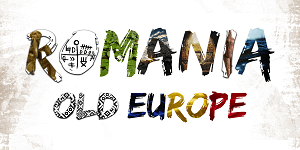What is a Brand Value Report?
Brand Valuation Summary
+ Internal understanding of brand
+ Competitor benchmarking
+ Historical brand value
+ Brand value tracking
The effect of a country’s national image on the brands based there and the economy as a whole is now widely acknowledged. In a global marketplace, it is one of the most important assets of any state, encouraging inward investment, adding value to exports, and attracting tourists and skilled migrants.
With the Western world seeing a real crisis of leadership on both sides of the Atlantic, the developing world is catching up. Bolder, more agile, increasingly innovative African, Middle Eastern, Asian, and Latin American nation brands are racing ahead at breakneck speed, poised for further growth in the years to come.
Nations as tourism brands
It is not that long ago that brands and branding were seen as the sole preserve of the FMCG brigade. Not anymore. Today everything is brandable from people to countries. And that means a value can be put on everyone and everything.Tourism is a major potential source of income for all countries, regions, and cities. But competition is intense and so it is essential to ensure all touchpoints of the brand are aligned to provide the best possible experience.
Africa is a patchwork quilt of 54 countries, with a plethora of different cultures, currencies, and local languages. This fragmented geography, slowly harmonising, remains an obstacle to both easier trade and tourism. Another issue is the perception that Africa is a long way from everywhere, which is far from the reality. South Africa remains the gateway to the continent, with Johannesburg the hub. Today, everyone has to fight for a share of the tourism wallet.
Opportunities
By virtue of a country’s bio-diversity, climate conditions, heritage and cultural diversity, many unique commodities and products are made available that generate appeal among customers in other countries. Whilst these are often traded, there is an opportunity for greater value creation by protecting their source of origin, so that similar products from another region cannot unfairly exploit the reputation that has been amassed.
Every nation in the world has such valuable intangible assets. These exported products add to the perceptions around a nation’s brand. However, a lot of work needs to go into protecting, regulating, and managing them in order to create an effective global marketing strategy and extract the hidden value. Ceylon tea is a good example of a country of origin product that has survived for 150 years after it was first exported to the UK. Although it still retains the perception of being a good quality tea, it is now under pressure to use modern marketing and branding techniques to stay relevant in these rapidly changing times.
Branding strategies centring on the geographical origin of a product is a key basis for differentiating them from commodity products. And the use of such “geographical indication” (GI) can involve a range of unique quality characteristics associated with a particular location.
The annual report on the most valuable and strongest nation brands October 2019
Tags: Blue Ocean Strategy, Branding, Old Europe, reBranding













